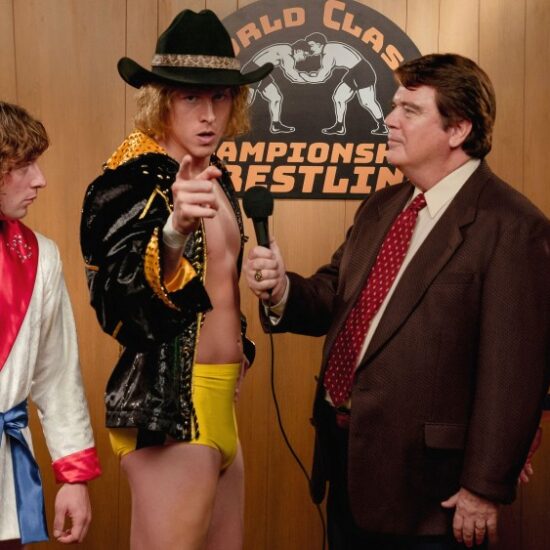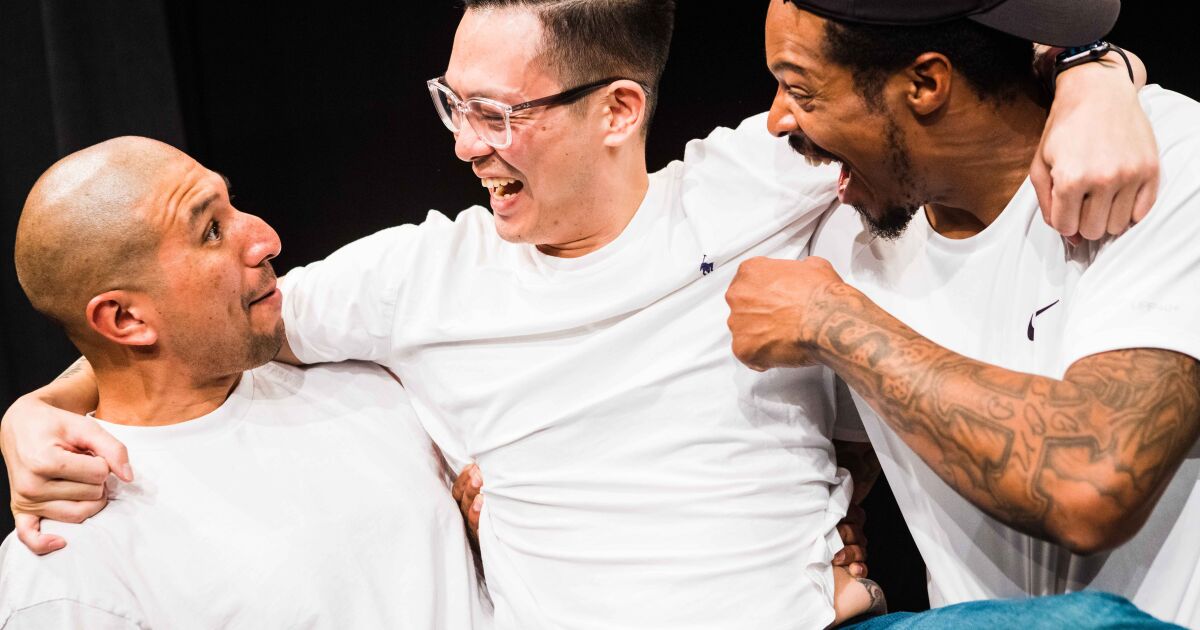
The Actors’ Gang workshop production “(Im)migrants of the State” opens with a moving prison visitation scene. Jovial and dressed identically in blue button-up shirts and jeans , the characters introduce themselves to the audience — revealing their age at the time of sentencing and something they loved.
In an example of life imitating art, most of the cast members themselves were sentenced as teenagers — the youngest was 15 — co-director and ensemble member Rich Loya said. Through theater, they’re able to address the emotions that have been suppressed for survival.
“These are our truths in our real lived experiences, before and during incarceration,” he said.
The Actors’ Gang Prison Project is a rehabilitation program that offers theater programming to 14 California state prisons, a reentry facility and an L.A. County probation camp. What begins as a week-long intensive program evolves into a peer-led class that allows incarcerated men and women to break down emotional barriers. The Actors’ Gang, which was founded in 1981 as an experimental theater ensemble under the direction of “Shawshank Redemption” actor Tim Robbins, is now celebrating the 40th anniversary of its first-ever production, “Ubu the King,” with a revival directed by Robbins in repertory with new play “(Im)migrants of the State.” For Loya and many other incarcerated people with previous life sentences, the Actors’ Gang has evolved into a beacon of hope.
Robert Chavez, left, Shaun Jones, John Dich and Montrell Harrell.
(Bob Turton)
Loya joined the program in September 2016 for its seven-day intensive running from 9 a.m. to 1 p.m. daily. By September 2017, he was in a reentry facility. He credits the Actors’ Gang for the big shift. After transferring his parole location and moving to L.A., he was drawn back to the program. One Friday afternoon, he went to the Actors’ Gang headquarters in Culver City, rang the doorbell and Jeremie Loncka, the director of programming for the Prison Project and co-director of “(Im)migrants of the State,” answered. Loncka offered Loya an opportunity to return to prison, but this time to teach , and he replied, “Sign me up.” By October 2018, Loya was teaching.
Loya was one of 25 people in his group taking part in the program at Avenal State Prison in 2016. Of the 25, 22 are out of prison and back home with their families now. And of the 22, 17 had life sentences. He says there were “dark times” when it felt like they’d be in prison forever. Changes to California’s three-strikes law brought much-needed relief, he said.
“When the little hope came through in the early 2000s — that lifers were going home — it was unheard of,” he said.
Loya said people turned to self-help classes to make the dream a reality, but it only went so far.
“I did dozens and dozens of self-help classes, none that allowed me to reconnect with emotions,” he said. “But this was the one class that I was able to reconnect with humanity, with myself, in a way that no other program or person gave me or taught me.”
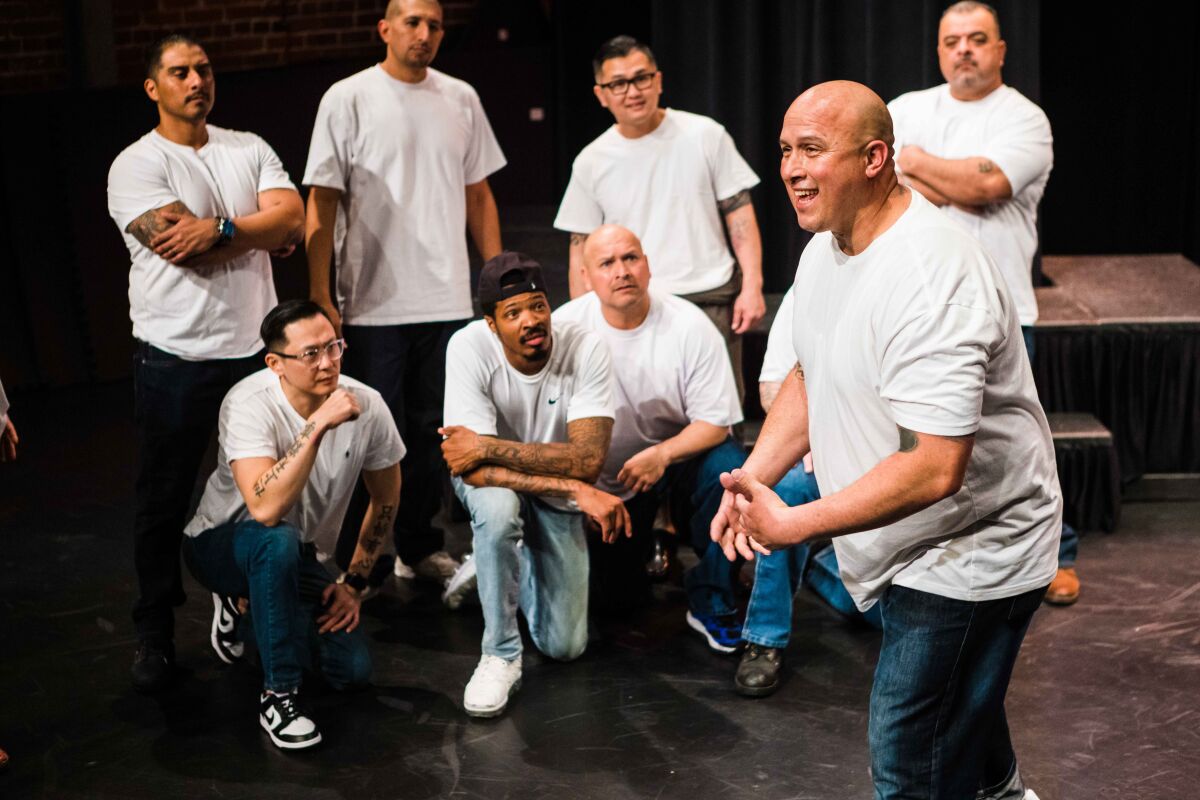
John Dich, front from left, Montrell Harrell, Henry Palacio, Shaun Jones and Gregory Leon; Robert Chavez, back from left, Edgar Rodriguez, Scott Tran and Rich Loya.
(Bob Turton)
Many people joined the program in the hopes of getting parole, even putting on makeup for acting purposes. For many, the arts were never on the table. Loncka said he usually starts each class by asking for a raise of hands from everyone who has participated in an art program before. Very few raise their hands.
“The part of it that keeps me coming back is the human side of getting to watch these breakthroughs,” Loncka said.
Each gathering begins with a “red hot share” in a circle to communicate what is going on in everyone’s lives, good or bad. It follows the group’s four pillars: “speaking from the heart, listening from the heart, being lean, being spontaneous,” Loya said.
What follows is a series of theater games and exercises. In a game called “Name, Film, Gesture,” each person in the circle says their name, a favorite film and a physical gesture. Everyone in the circle confirms that they’ve listened by repeating the three back all at once.
“It’s really cool to see when this happens because smiles start to come out,” Loya said. “Usually you wouldn’t see smiling on the yard.”
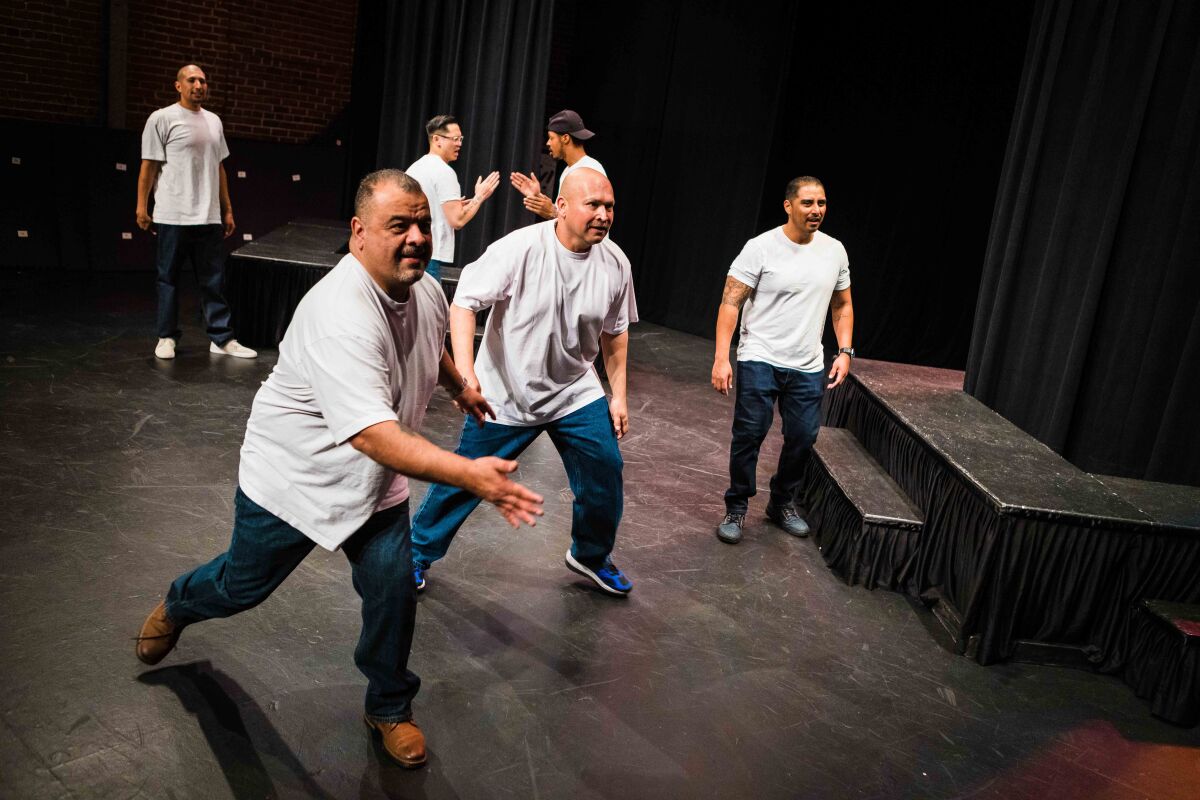
Rich Loya, front from left, Henry Palacio and Robert Chavez; Edgar Rodriguez, back from left, John Dich and Montrell Harrell.
(Bob Turton)
They aren’t therapists, but for those inside, the program can be therapeutic, Loncka said.
Loncka joined the Actors’ Gang Prison Project in 2010. At the time, the curriculum was loose. By 2012, the program became more structured and attracted funding.
“We didn’t start off with the intention of creating theater inside necessarily,” he said.
Now there are programs in prisons that have been running for almost a decade and the self-guided groups are creating their own plays and performances through commedia dell’arte.
In the theatrical art style, the groups explore four emotions through improvisation and stock characters: happiness, sadness, fear and anger. Loya, who was tried at age 16 and spent about 30 years incarcerated, had trouble navigating his emotions because he wasn’t allowed to show weakness inside prison.
“I was sad so many times being away from the holidays, being away from my family, but I couldn’t show that,” Loya said. “So it was anger. It was always anger as my secondary emotion. That was how I survived because we no longer live inside, behind the walls, we survive.”
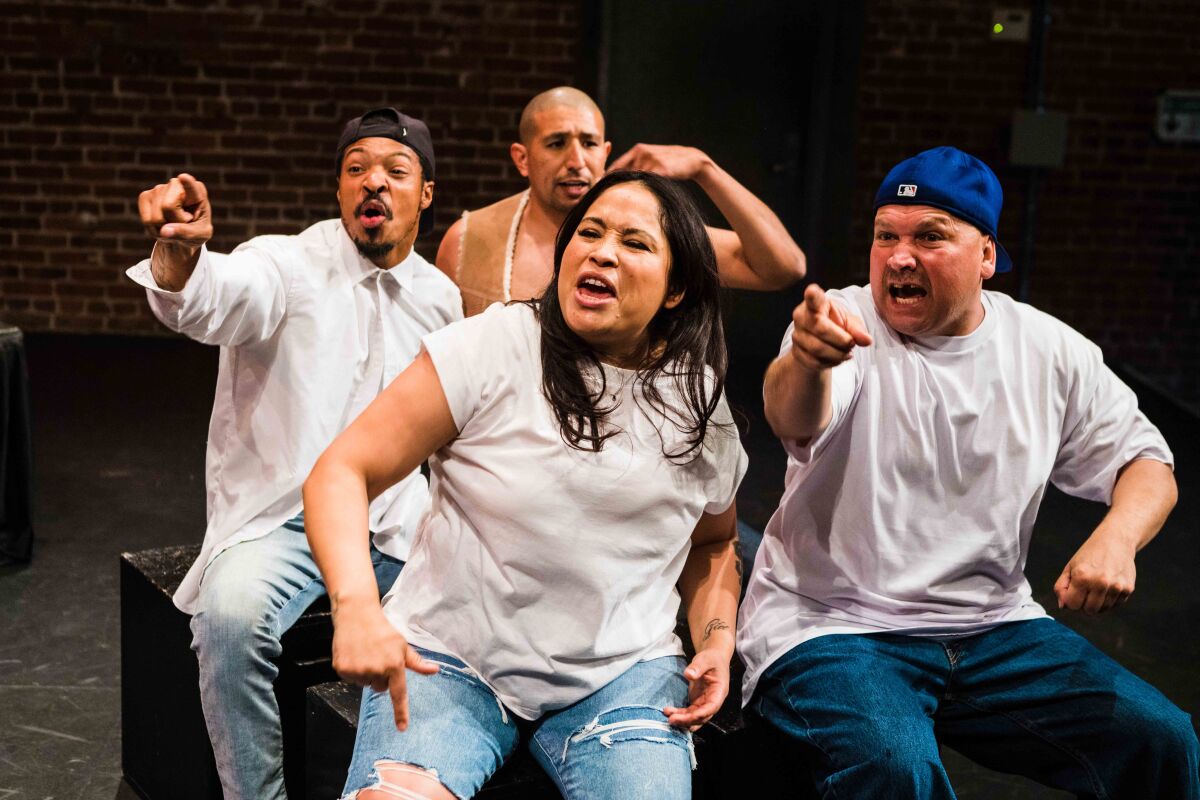
Yahaira Quiroz, front from left, and Henry Palacio; Montrell Harrell, back from left, and Edgar Rodriguez.
(Bob Turton)
The Actors’ Gang’s new show chronicles the experiences of the ensemble made up of 11 men and two women who were formerly incarcerated, pulling back the layers of trauma from being told they’re a threat to society for decades. During rehearsal on March 9, they shared their past — including memories of their childhood.
“(Im)migrants of the State” tells honest stories that show the program’s impact. On the yard, there are rules, restrictions and racial lines, but Actors’ Gang Prison Project classes allowed a glimpse into humanity that was stripped from them, Loya said.
Loya turned to the common theater phrase “the show must go on” with a new interpretation. While they were incarcerated with life sentences, their lives continued both inside and out of prison. While sentencing may seem like a dead end, their worlds, lives and experiences still mattered.
“We hope that what they [the audience] take away is that people do deserve a second chance,” Loya said. “We’re showing what we could be, which is positive, influential members of society.”










